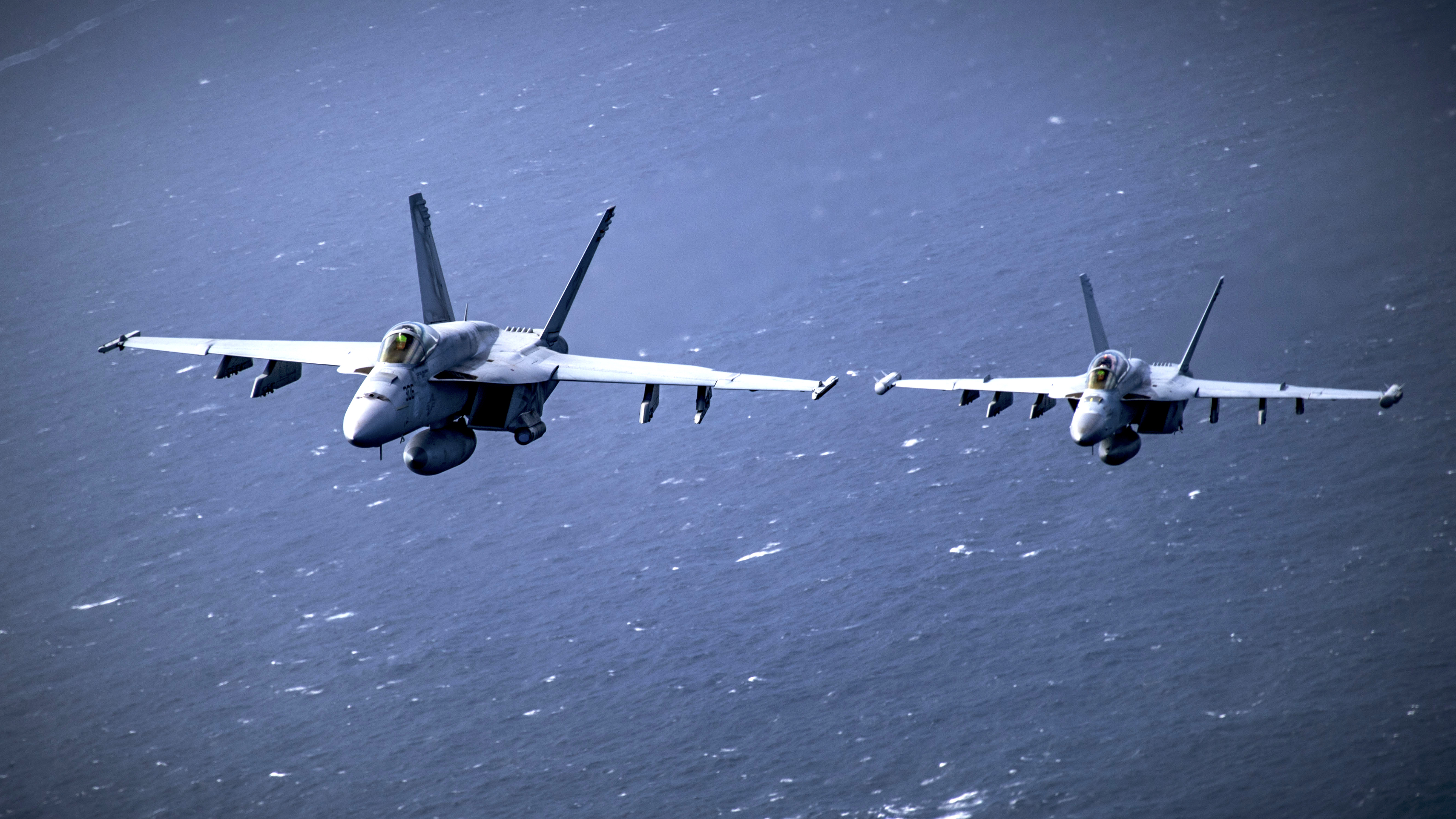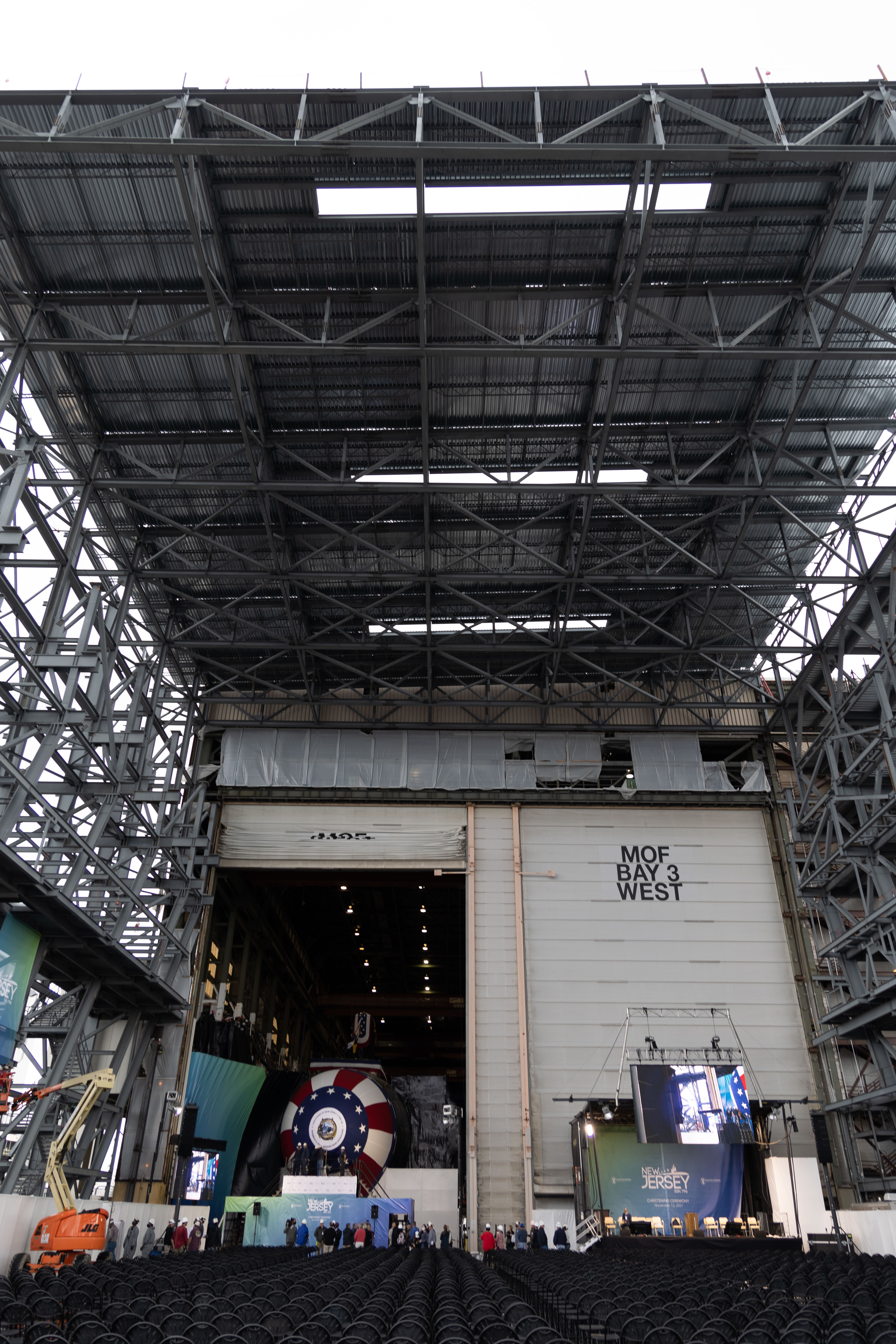
Congressional authorizers are approving 13 battle force ships and saving two of the seven aging Ticonderoga-class guided-missile cruisers the Navy tried to decommission, according to a draft of the National Defense Authorization Act.
An agreement reached by the House and Senate armed services committees authorizes 13 battle force ships, an increase of five ships from the eight the Navy sought in the Fiscal Year 2022 budget request.
The Fiscal Year 2022 policy bill, released today, authorizes funding for three Arleigh Burke-class destroyers, two Virginia-class attack boats, one Constellation-class frigate, two Expeditionary Fast Transport vessels, two John Lewis-class fleet oilers, two Navajo-class towing, salvage and rescue ships, and one T-AGOS(X) ocean surveillance ship.
The legislation also seeks to prevent the service from retiring all seven of the cruisers the Navy asked to decommission in its budget request. According to text of the legislation, the Pentagon cannot use any authorized money for FY 2022 “to retire, prepare to retire, inactivate, or place in storage more than 5 guided missile cruisers.”
Neither the text of the legislation nor the explanatory statement specified which cruisers the Navy could decommission. The House previously passed an amendment in its version of the bill that said the Navy could only retire USS Port Royal (CG-73), USS Vella Gulf (CG-72), USS Hué City (CG-66) and USS Anzio (CG-68). USS San Jacinto (CG-56), USS Lake Champlain (CG-57) and USS Monterey (CG-61) were spared in the House version, but it’s unclear if the Navy will be able to choose which five it can decommission under the bill.
Lawmakers also agreed to authorize money for 12 F/A-18E/F Super Hornets, despite the Navy’s pleas to end the production line. The addition of the 12 Super Hornets is meant “to mitigate the Navy’s strike-fighter shortfall and bolster tactical fighter aircraft capacity,” according to a summary of the bill.
While the Navy had planned to buy more Super Hornets in a multi-year procurement between FY 2022 and FY 2024, the service’s FY 2021 budget submission called for an end to the production line of the Boeing-built aircraft after that budget year. The Navy at the time said it would instead use that money to invest in its Next Generation Air Dominance (NGAD) program, which includes a sixth-generation fighter.

Navy officials have argued the service doesn’t need to buy more Super Hornets and that any fighters it purchases now could not stand up to the threats they might face at the end of their service lives. But the committee has voiced concern about the Navy’s push to end a mature production line to develop new technologies.
The bill also includes language that would keep the Navy’s Board of Inspection and Survey (INSURV) reports, which assess the health of the service’s ships, going in perpetuity. The reports were set to end as of Oct. 1, 2021 if Congress did not address the matter, USNI News previously reported.
According to the explanatory statement accompanying the bill, authorizers agreed to eliminate the mandate that a classified version of the INSURV report go solely to the congressional defense panels. It also calls for the chief of naval operations to brief authorizers about the new Naval Safety Command the service is reorganizing. The statement cites the fire that destroyed the former amphibious assault ship USS Bonhomme Richard (LHD-6) as the reason for the Navy’s decision to revamp its safety apparatus.
“We understand that based on the Navy’s investigation into the USS Bonhomme Richard fire the Chief of Naval Operations intends to restructure the Naval Safety Center into the Naval Safety Command with a more senior flag officer in command and a mandate to ensure safety best practices and lessons learned are more fully incorporated across the Navy,” the joint statement reads.
“Accordingly, we direct the Chief of Naval Operations to provide a briefing to the Committees on Armed Services of the Senate and the House of Representatives, not later than March 1, 2022, on the roles and responsibilities of the Naval Safety Command. This briefing shall include an assessment of the appropriateness of such Command, or another command, to conduct minimal or no-notice inspections of battle force ships undergoing depot maintenance for compliance with applicable safety, firefighting, and other procedures.”
The bill also calls for a report on the health of the Virginia-class attack submarine program, requiring the Navy secretary to provide congressional defense panels with the document within 120 days of the National Defense Authorization Act becoming law.

This version of the NDAA includes a $25 billion increase to the Pentagon’s budget, a move that comes after both House and Senate armed services committees approved similar increases in their marks of the bills. While the House passes its version of the NDAA in September, the policy bill has faced numerous hurdles in the Senate and has yet to receive a vote on the floor.
Authorizers’ release of the bill comes several days after President Joe Biden signed a second continuing resolution, as lawmakers also struggle to reach a deal on the FY 2022 spending bills. The current CR funds the government through Feb. 18, 2022.
But it’s unclear where appropriators will fall in their negotiations. Senate appropriators included a $24.7 top line increase to national defense spending in their draft of the spending bill, but the House Appropriations Committee followed the Biden administration’s budget and allotted $753 billion for national defense spending, with about $715 billion going to the Pentagon.
The House is slated to vote on this version of the NDAA on Tuesday night.





